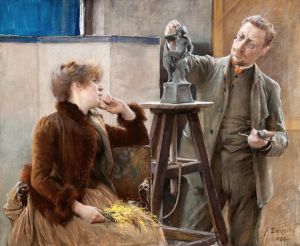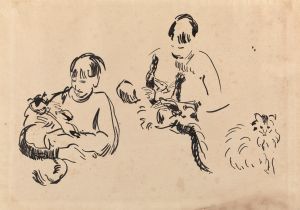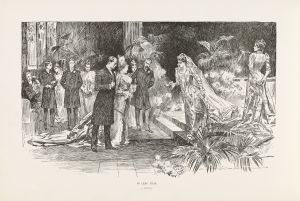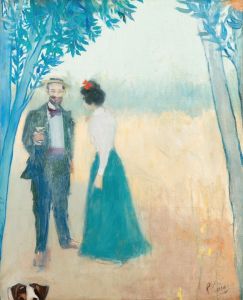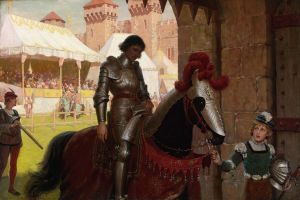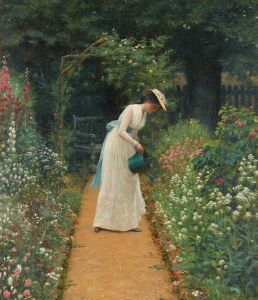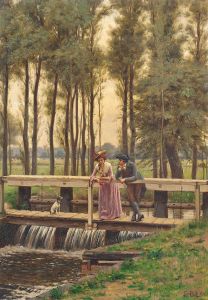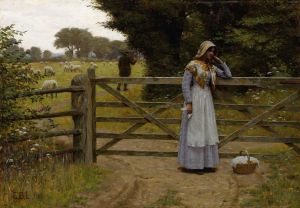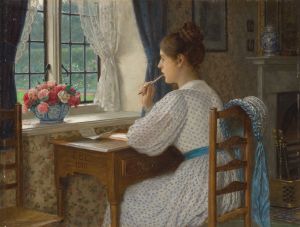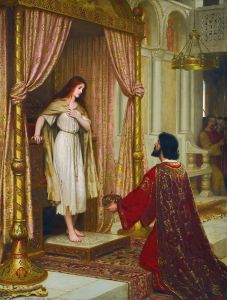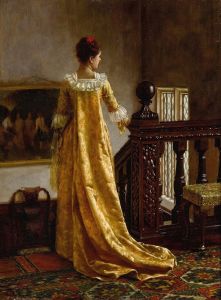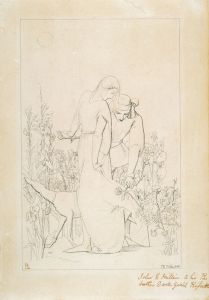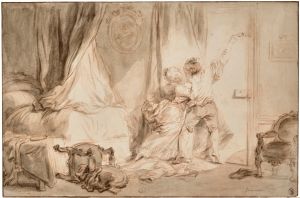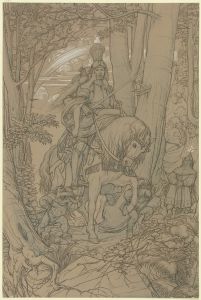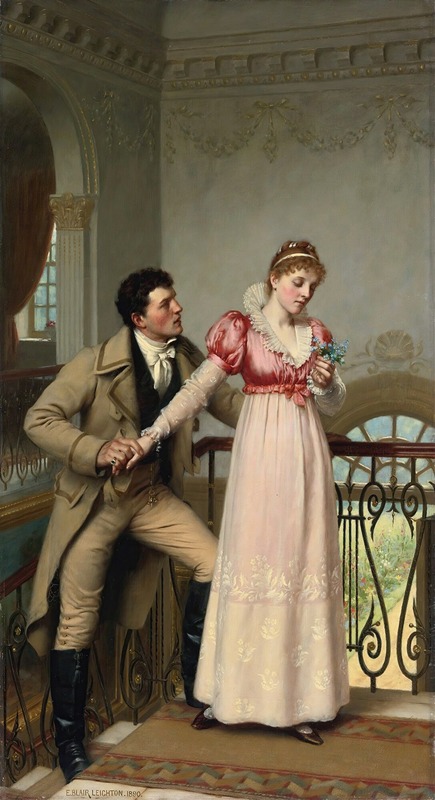
Yes Or No
A hand-painted replica of Edmund Blair Leighton’s masterpiece Yes Or No, meticulously crafted by professional artists to capture the true essence of the original. Each piece is created with museum-quality canvas and rare mineral pigments, carefully painted by experienced artists with delicate brushstrokes and rich, layered colors to perfectly recreate the texture of the original artwork. Unlike machine-printed reproductions, this hand-painted version brings the painting to life, infused with the artist’s emotions and skill in every stroke. Whether for personal collection or home decoration, it instantly elevates the artistic atmosphere of any space.
Edmund Blair Leighton was a British painter known for his historical and romantic scenes, often depicting medieval and Regency subjects. One of his notable works is "Yes or No," painted in 1893. This painting exemplifies Leighton's skill in capturing the subtleties of human emotion and interaction within a historical context.
"Yes or No" portrays a scene set in a medieval or possibly early Renaissance period, featuring a young woman and a man engaged in a moment of courtship. The painting is characterized by its attention to detail, particularly in the clothing and setting, which are meticulously rendered to evoke the historical period. The woman is seated, holding a flower, while the man stands beside her, seemingly awaiting her response to a question or proposal. This moment of anticipation is central to the painting's narrative, capturing a universal theme of love and decision-making.
Leighton's use of color and light in "Yes or No" enhances the romantic atmosphere. The soft lighting and warm tones create an intimate setting, drawing the viewer into the personal exchange between the two figures. The artist's technique reflects the influence of the Pre-Raphaelite Brotherhood, known for their vibrant colors and detailed realism, although Leighton's work is often more restrained and polished.
The composition of "Yes or No" is carefully balanced, with the figures positioned to create a sense of harmony and focus. The woman's contemplative expression and the man's attentive posture suggest a moment of introspection and emotional tension. This dynamic is further emphasized by the surrounding environment, which includes elements typical of Leighton's work, such as lush greenery and architectural details that suggest a setting of historical significance.
Edmund Blair Leighton was part of the late Victorian era of British art, a time when historical and genre painting was highly popular. His works often reflect the societal values and interests of the time, particularly the fascination with chivalry, romance, and the idealized past. "Yes or No" is a prime example of how Leighton combined these themes with technical precision to create paintings that were both visually appealing and emotionally resonant.
Leighton's paintings, including "Yes or No," were well-received during his lifetime, and he exhibited regularly at the Royal Academy of Arts in London. His work remains popular today, appreciated for its craftsmanship and the timeless quality of its themes. "Yes or No" continues to be admired for its depiction of a tender, universal moment, rendered with the elegance and attention to detail that are hallmarks of Leighton's artistic legacy.





